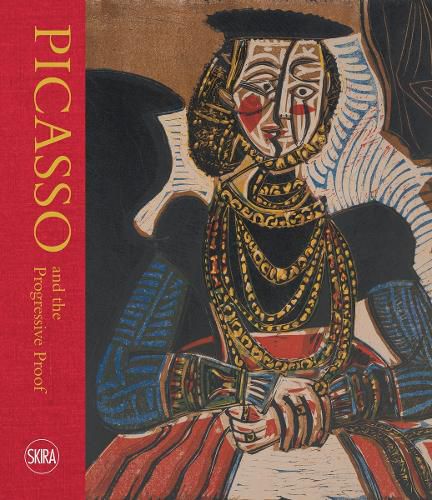Readings Newsletter
Become a Readings Member to make your shopping experience even easier.
Sign in or sign up for free!
You’re not far away from qualifying for FREE standard shipping within Australia
You’ve qualified for FREE standard shipping within Australia
The cart is loading…






On the 50th anniversary of Picasso's (1881-1973) death, a book devoted to the progressive proofs by the leading Spanish master.
While there has been considerable interest in Pablo Picasso's late work over the past several decades, and some of that interest directed at the artist's work in the linoleum print medium, there remains much to discover regarding this aspect of his prodigious printmaking activities, and specifically on the role played by the progressive proof. There has been an uptick in the acquisition of these sets of proofs by museums and private collectors over the past twenty years but exhibitions and published accounts have lagged behind.
With this present project we examine for the first time in depth a particularly illuminating set of eight progressive proofs made by Picasso and his printer Hidalgo Arnera for the artist's first published linocut, the so-called Cranach II (Baer 1053; 1958). The first in a series in the medium of linoleum block prints (after a singular effort in 1939), Picasso created the first Portrait of a Young Girl after Cranach the Younger in two colors and in the same orientation as the Cranach original on 3 July 1958. The following day he commenced making five different linoleum blocks - bistre or grayish brown, yellow, red, blue and black - to be superimposed on each other in that order and in reverse of the original, the Cranach II print. He then proceeded to print different proofs, in the process making two different states of the color blocks and three of the black in order to arrive at the final image.
This event touched off a decade of work in linocut (or linoleum block) printmaking, inspired by the South of France, where the artist had increasingly worked since the 1940s. Speaking to the artist's love affair with the region, he begins a series of linocuts depicting the bullfight. Nine proofs for the Pique II (1959) attest to this; the series completed by the finished print.
$9.00 standard shipping within Australia
FREE standard shipping within Australia for orders over $100.00
Express & International shipping calculated at checkout
On the 50th anniversary of Picasso's (1881-1973) death, a book devoted to the progressive proofs by the leading Spanish master.
While there has been considerable interest in Pablo Picasso's late work over the past several decades, and some of that interest directed at the artist's work in the linoleum print medium, there remains much to discover regarding this aspect of his prodigious printmaking activities, and specifically on the role played by the progressive proof. There has been an uptick in the acquisition of these sets of proofs by museums and private collectors over the past twenty years but exhibitions and published accounts have lagged behind.
With this present project we examine for the first time in depth a particularly illuminating set of eight progressive proofs made by Picasso and his printer Hidalgo Arnera for the artist's first published linocut, the so-called Cranach II (Baer 1053; 1958). The first in a series in the medium of linoleum block prints (after a singular effort in 1939), Picasso created the first Portrait of a Young Girl after Cranach the Younger in two colors and in the same orientation as the Cranach original on 3 July 1958. The following day he commenced making five different linoleum blocks - bistre or grayish brown, yellow, red, blue and black - to be superimposed on each other in that order and in reverse of the original, the Cranach II print. He then proceeded to print different proofs, in the process making two different states of the color blocks and three of the black in order to arrive at the final image.
This event touched off a decade of work in linocut (or linoleum block) printmaking, inspired by the South of France, where the artist had increasingly worked since the 1940s. Speaking to the artist's love affair with the region, he begins a series of linocuts depicting the bullfight. Nine proofs for the Pique II (1959) attest to this; the series completed by the finished print.